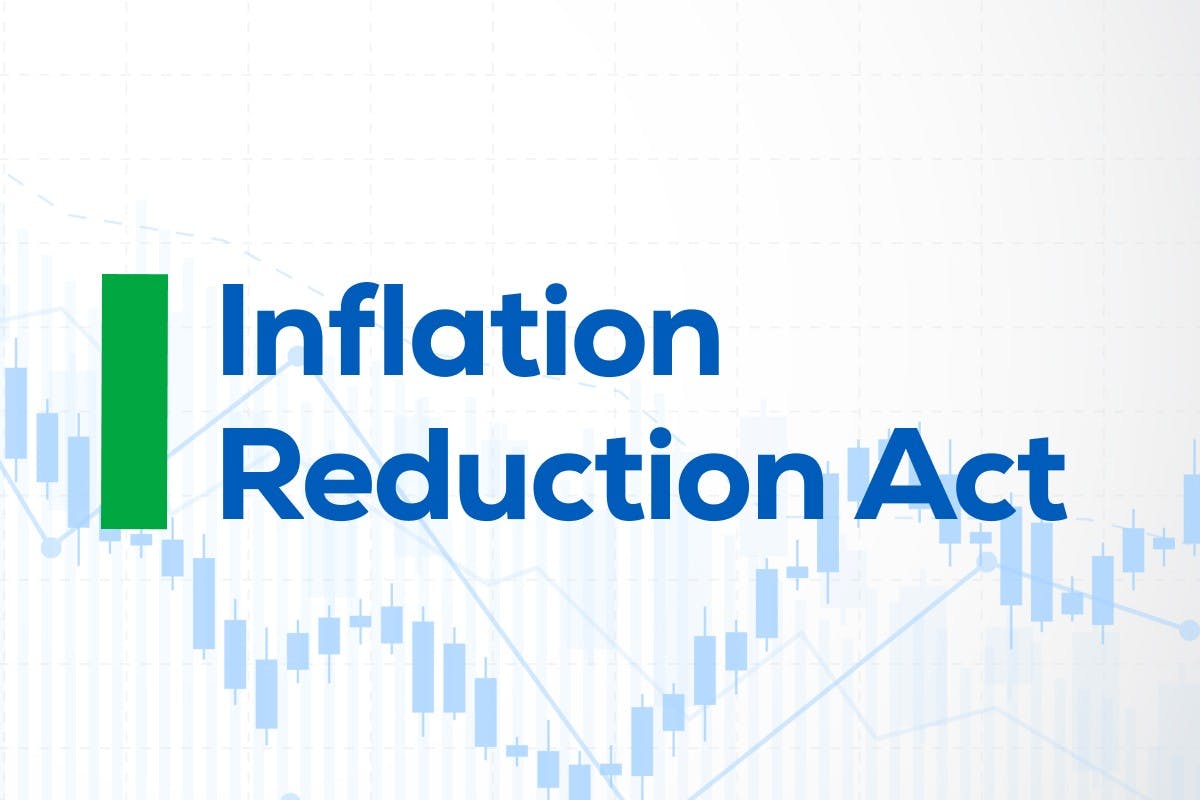Tax credits are a financial incentive that the US government uses to increase the adoption of clean energy technologies like solar power. The United States has offered various tax credits for solar panels since 2005, but with the signing of The Inflation Reduction Act of 2022, solar tax credits are increasing in value, and are expected to have a significant impact on the solar industry, saving homeowners billions of dollars over the next decade.
In this article, we’ll explain what The Inflation Reduction Act of 2022 is and how it’s being funded, show the value of the solar tax credits that it provides, give a history of tax credits for home solar, and highlight other home electrification products and appliances that will receive rebates as part of The Inflation Reduction Act of 2022.
NOTE: The information contained within is subject to change, and should not be considered tax advice.
See how much you can save with home energy changes
What Is The Inflation Reduction Act Of 2022?
The Inflation Reduction Act of 2022 is a piece of legislation that invests $369 billion towards clean energy and energy security, representing the largest investment in U.S. history towards the goal of combating climate change. The bill uses tax credits to incentivize the installation of solar power and battery storage systems, and rebates for electrifying the home to reduce fossil fuel usage.
The bill was signed by the Senate on August 7, 2022, and then signed by the House of Representatives on August 12, 2022, and was signed by President Biden on August 16, 2022.
For home solar power, the Inflation Reduction Act increases the Investment Tax Credit for residential solar systems to 30%, and extends the program through December 31, 2034, creating a decade of predictable tax savings for the solar industry. (The bill renames the Investment Tax Credit to a more obvious, “Residential Clean Energy Credit”.)
(For more information about the Investment Tax Credit (ITC), check out our guide: Everything You Need To Know About The Solar Tax Credit)
In addition, the 30% tax credit now extends to leased or purchased battery storage systems, even if those systems are added after the solar panels have been installed on the roof. This solar battery storage tax credit can significantly reduce the cost of adding storage for energy security and backup power.
As a result of this solar tax credit extension, the Inflation Reduction Act is expected to help cut up to 1 billion tons of carbon dioxide emissions, reducing carbon and greenhouse gas (GHG) emissions by roughly 40% by 2030, according to a study by Zero Lab at Princeton University.
Value Of The Solar Tax Credit
After the passing of The Inflation Reduction Act of 2022, the value of the solar tax credit is as follows:
- 30% - Projects that finish construction between 2022 and 2032
- 26% - Projects that finish construction in 2033
- 22% - Projects that finish construction in 2034
- 0% - Projects that finish construction in 2035 or later
Keep in mind, this value is based on the total cost of the system, and the year when your system was installed dictates what credit you are eligible for.
For any system installed in 2023, even if it was installed before The Inflation Reduction Act of 2022 passed, that system will be eligible for the full 30% tax credit during your next yearly tax filing.
See how much you can save by going solar with Palmetto
History Of The Solar Tax Credit
The Investment Tax Credit was originally created by the Energy Policy Act of 2005, and has changed value (and nearly expired) many times over the years.
Most recently, the value of the solar tax credit was 30% in 2021, before changing to 26% in 2022, and was set to change again to 22% in 2023, before expiring entirely in 2024.
Thanks to The Inflation Reduction Act Of 2022, that deadline has now been extended through 2034, which represents the single most significant federal investment to decarbonize the sectors responsible for the nation’s greenhouse gas emissions - transportation, electricity generation, and residential, commercial, and industrial energy use.
“The United States is poised to lead the world’s clean energy transformation while lowering costs for families.”
Abigail Ross Hopper
President and CEO, Solar Energy Industries Association (SEIA)
How Is The Inflation Reduction Act Of 2022 Being Funded
Changes being enacted by the bill are expected to generate $739 billion, with $300 billion being invested into deficit reduction. This funding comes from a variety of sources:
- 15% Corporate Minimum Tax
- Prescription Drug Pricing Reform
- IRS Tax Enforcement
- 1% Stock Buybacks Fee
- Loss Limitation Extension
Other Products With Rebates
In addition to a tax credit on solar power systems, The Inflation Reduction Act of 2022 also includes additional rebates for various products, with the goal of helping to electrify the home, so that more appliances can be powered by clean, renewable energy, rather than natural gas or other fossil fuels.
- Heat Pump: Up To $8,000
- Heat Pump Water Heater: Up To $1,750
- Electric Stove (Including Induction) or Electric Clothes Dryer: Up To $840
- Electrical System Upgrades: Up To $4,000
- Electrical Wiring Upgrades: Up To $2,500
The rebate on electrical system upgrades is especially important to those considering home solar, as they are often necessary before solar panels or battery storage systems can be installed, so this can definitely help lower the overall cost of a project when installing solar.
Limits On Who Can Apply
There is a limit on who can apply for these energy rebates on home electrification. Households that earn up to 80% of the median income in their area can claim the full rebate, up to a maximum of $14,000 in total rebates, through Sept. 30, 2031. (You can assess median family income for your area at the Office of Policy Development and Research.)
For moderate-income households, defined as earning between 80% and 150% of their area’s median income, they can receive the same rebates, but the value is capped at no more than 50% of the total cost of the project.
How To Take Advantage Of The Inflation Reduction Act Of 2022
If you’ve been thinking about going solar to help offset the rising cost of electricity, there’s never been a better time! This extension of the solar tax credit is a meaningful turning point in our country's commitment to, and belief in, companies (and people!) like Palmetto.
Thanks to The Inflation Reduction Act Of 2022, projects that install in 2022 and beyond are now eligible for a 30% tax credit, which can significantly lower the cost of installing solar panels.
To find out how much you can save, get started today with our free Solar Design and Savings Estimate tool. With just a few pieces of information, we can show you what a solar power system would look like on your roof, calculate your estimated cost and potential 30-year savings, identify the environmental impact of your decision to go solar, and more.

